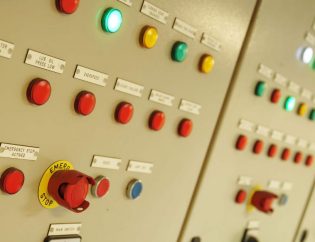Understanding Load Management:
Load management refers to the strategic management of electrical loads to ensure the optimal utilization of available power resources. It involves monitoring, controlling, and balancing the electrical loads within a system to prevent overloading, reduce energy waste, and maintain system stability. Effective load management helps to avoid equipment failures, improve energy efficiency, and optimize the utilization of power sources.
Role of Feeder Pillars in Load Management:
Feeder pillars play a critical role in load management by facilitating the distribution and control of electrical loads. These pillars act as intermediaries between the main power supply and individual electrical circuits, enabling the efficient routing and allocation of power. Feeder pillars house the necessary equipment, such as circuit breakers, fuses, and monitoring devices, that enable load balancing, protection, and control.
Load Monitoring and Control Features of Feeder Pillars:
Feeder pillars are equipped with load monitoring and control features that provide real-time data on the electrical loads being drawn from the power source. This data helps operators and system administrators monitor the power consumption and make informed decisions regarding load distribution and optimization. Feeder pillars may also have load control capabilities, allowing operators to adjust the power supply to specific circuits or areas based on demand or priority.
Feeder Pillars for Load Distribution:
Load distribution is a key aspect of load management, as it involves evenly distributing the electrical load across multiple circuits or phases to prevent overloading and ensure efficient utilization of available power. Feeder pillars are designed to accommodate load distribution strategies. By dividing the load into manageable sections and routing it through different feeder pillars, the electrical distribution system can balance the load across multiple sources and circuits.
Load Shedding and Demand Response with Feeder Pillars:
During peak demand periods or in situations where the power supply is limited, load shedding and demand response programs help manage the load effectively. Feeder pillars play a crucial role in implementing load shedding strategies by selectively disconnecting non-critical loads or reducing power consumption in predefined areas. By integrating feeder pillars with demand response programs, system operators can proactively manage the load, prevent overload conditions, and ensure grid stability.
Feeder Pillars for Load Protection:
Load protection is vital to safeguard electrical equipment and prevent damage due to overloads, short circuits, or faults. Feeder pillars incorporate protective devices such as circuit breakers and fuses to isolate and protect circuits in case of abnormal conditions. These protective measures minimize the risk of equipment failure, electrical fires, and costly downtime, ensuring the safe and reliable operation of the electrical system.
Feeder Pillars and Energy Efficiency:
Effective load management through feeder pillars contributes to energy efficiency. By optimizing load distribution and preventing overloads, energy waste can be minimized. Feeder pillars enable load balancing, ensuring that electrical loads are evenly distributed across available power sources. By avoiding imbalances and excess strain on specific circuits or phases, feeder pillars improve energy efficiency and help reduce overall power consumption.
Case Studies: Successful Implementation of Feeder Pillars in Load Management:
Real-world examples of successful implementations of feeder pillars in load management further emphasize their importance. For instance, in a commercial building, feeder pillars can facilitate load distribution across different floors or sections, ensuring balanced power usage and minimizing the risk of overloads. In an industrial facility, feeder pillars can manage the distribution of power to various machines and processes, optimizing energy usage and preventing equipment failures.
Considerations for Implementing Feeder Pillars for Effective Load Management:
Implementing feeder pillars for effective load management requires careful planning and consideration. Proper sizing and capacity planning ensure that the feeder pillars can handle the expected loads without overloading. Integration with control systems and automation allows for seamless monitoring and control of the loads. Regular maintenance and monitoring of feeder pillars are necessary to ensure their optimal performance. Compliance with electrical codes and regulations is essential to guarantee safety and adherence to industry standards.
Future Trends in Feeder Pillars and Load Management:
As technology advances, feeder pillars are likely to evolve to meet the changing needs of load management. Integration with smart grid systems will enable more sophisticated load monitoring, control, and optimization capabilities. Predictive analytics and machine learning algorithms may be employed to forecast and anticipate load patterns, allowing for more proactive load management strategies. Additionally, as renewable energy sources become more prevalent, feeder pillars will play a vital role in integrating and managing the power generated from these sources into the electrical grid.
Conclusion:
Feeder pillars play a crucial role in effective load management within power distribution systems. By facilitating load balancing, distribution, and protection, feeder pillars contribute to efficient energy usage, reduced downtime, and improved system reliability. Implementing feeder pillars with proper planning and consideration ensures optimal load management and enhances the overall efficiency of the electrical distribution infrastructure. As technology continues to advance, feeder pillars will play an even more significant role in managing and optimizing electrical loads, contributing to a sustainable and resilient power grid.










